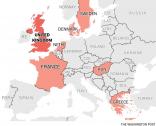Purpose – The purpose of this paper is to compare empirically the nature, level and influence of perceived risks involved in a retailer’s website and stores, as multichannel shoppers will do when deciding which distribution channel to buy in.
Design/methodology/approach – The research design uses an online survey of 1,015 multichannel customers that was drawn from the behavioural databases of a French multichannel retailer.
Findings – Overall risk as well as risks associated with logistics, psychological and performance are higher and more dissuasive for an online purchase; however, financial, time and transaction risks tend predominantly or exclusively to discourage in-store purchasing. Customers’ familiarity with the channel seems to make them more vigilant.
Research limitations/implications – The concept of risk, and especially financial risk, is variable among researchers, making it more difficult to undertake comparative studies on e-commerce than on stores or products.
Practical implications – Retailers should not look merely to the salience of an isolated risk factor but rather should consider its actual impact on their customers’ final decision. Nonetheless, retailers will find it more difficult to reduce perceived risk online than in-store.
Originality/value – By focusing on a multichannel retailer’s website and stores and comparing the effects of six types of risk on the purchase attitudes of its multichannel shoppers, this study is distinct from most single-channel studies, which have examined risk inherent in internet purchasing, handled risk on an experimental website and explored in-store risk. Moreover, the study focuses on the risks entailed by the purchase channel rather than those related to particular products or brands.
Keywords Perceived risk, Store, Website, Channel purchase attitude, Multichannel shoppers
Paper type Research paper
Christophe Bezes, chargé d'enseignement à l’Université de Paris Panthéon Assas





























































